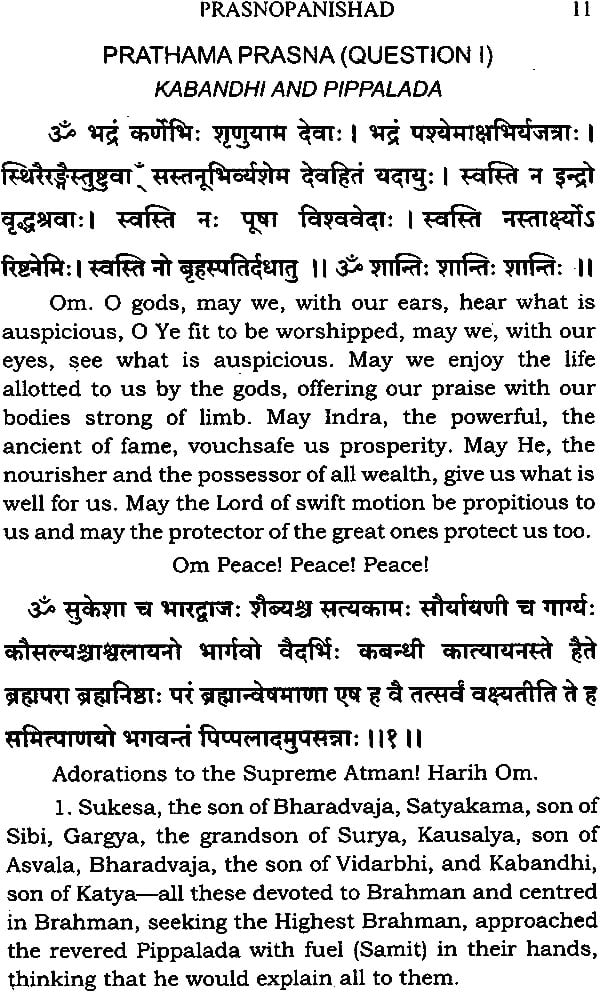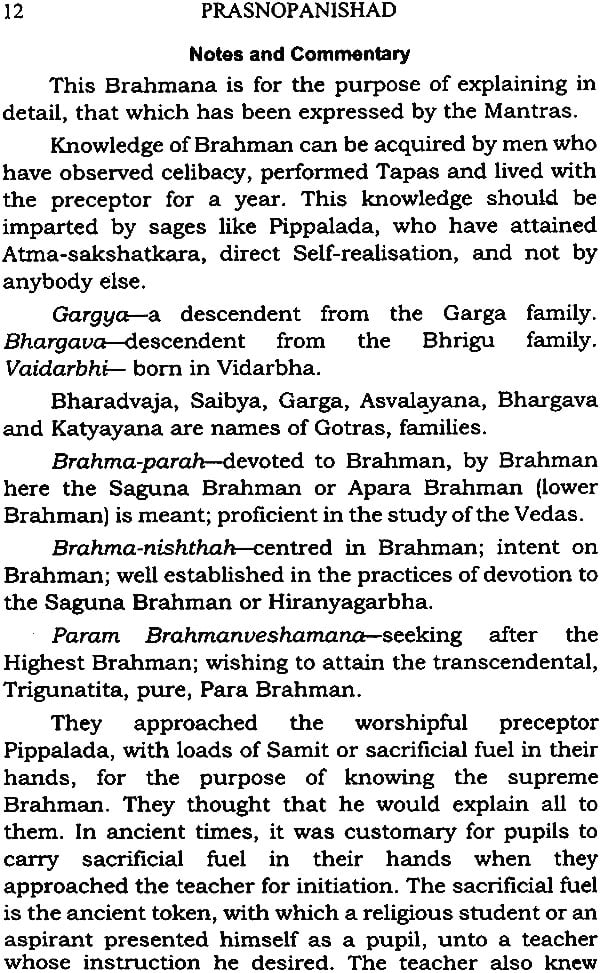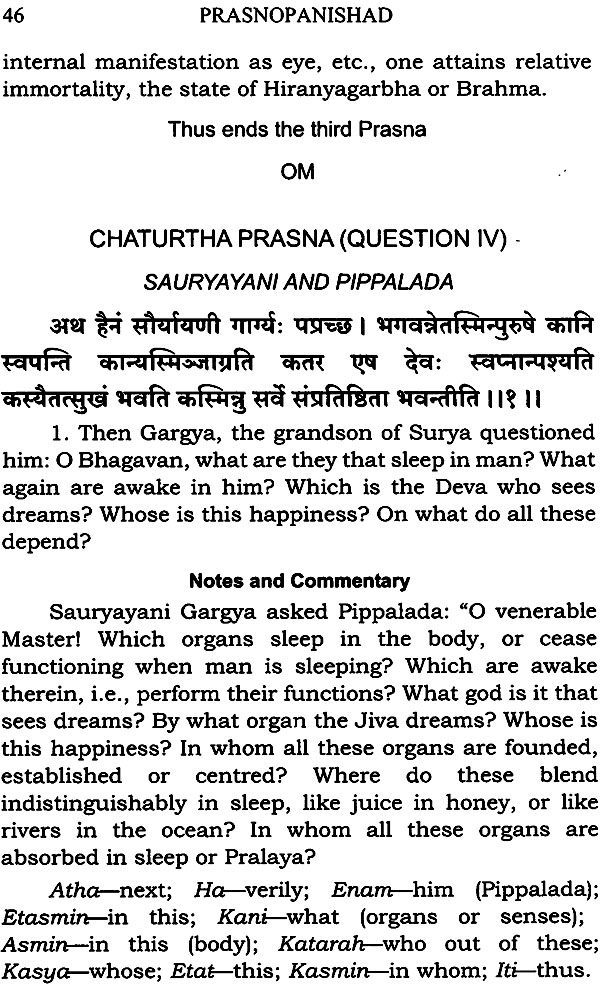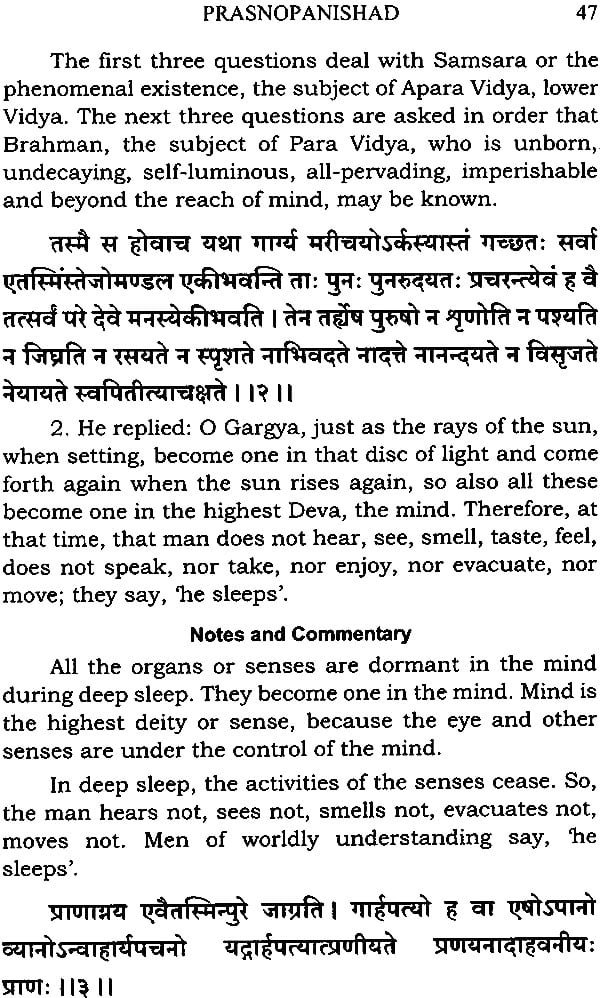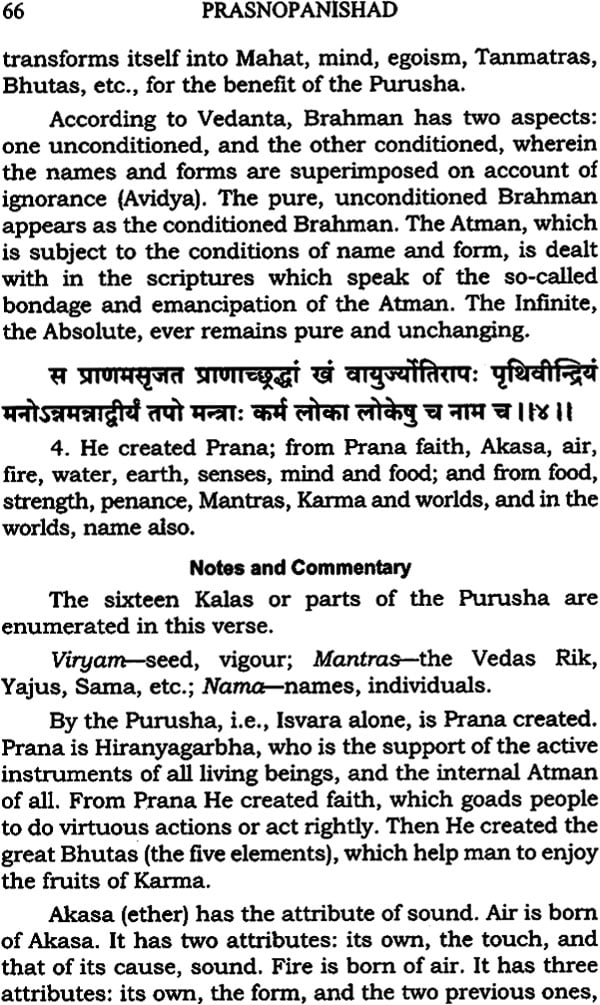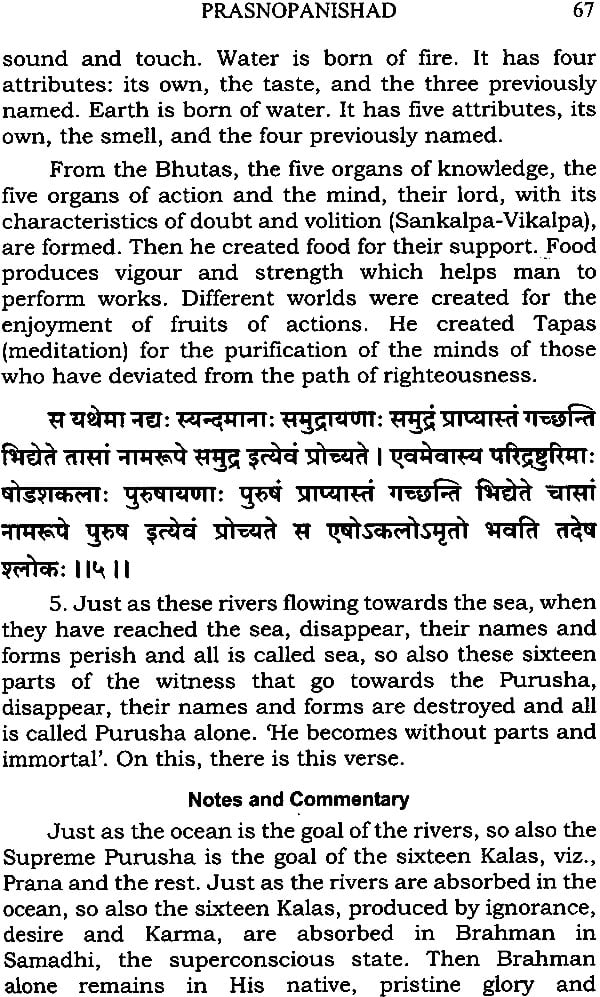
Prasna Upanishad
Book Specification
| Item Code: | NAM180 |
| Author: | Swami Sivananda |
| Publisher: | THE DIVINE LIFE SOCIETY |
| Language: | Sanskrit Text With English Translation and Detailed Commentary |
| Edition: | 2014 |
| Pages: | 70 |
| Cover: | Paperback |
| Other Details | 8.5 inch x 5.5 inch |
| Weight | 90 gm |
Book Description
Born on the 8th September, 1887, in the illustrious family of Sage Appayya Dikshitar and several other renowned saints and savants, Sri Swami Sivananda had a natural flair for a life devoted to the study and practice of Vedanta. Added to this was an inborn eagerness to serve all and an innate feeling of unity with all mankind.
His passion for service drew him to the medical career; and soon he gravitated to where he thought that his service was most needed. Malaya claimed him. He had earlier been editing a health and wrote extensively on health problems. He discovered that people needed right knowledge most of all; dissemination of that knowledge he espoused as his own mission.
It was divine dispensation and the blessing of God upon mankind that the doctor of body and mind renounced his career and took to a life of renunciation to qualify for ministering to this soul of man. He settled down at Rishikesh in 1924, practised intense austerities and shone as a great Yogi, saint, sage and Jivanmukta.
In 1932 Swami Sivananda started the Sivanadashram. In 1936 was born The Divine Life Society. In 1948 the Yoga-Vedanta Forest Academy was organised. Dissemination of spiritual knowledge and training of people in Yoga and Vedanta were their aim and object. In 1950 Swamiji undertook a lightning tour of India and Ceylon. In 1953 Swamiji convened a ‘World Parliament of Religions’. Swamiji is the author of over 300 volumes and has disciples all over the world, belonging to all nationalities, religions and creeds. To read Swamiji’s works is to drink at the Fountain of Wisdom Supreme. On 14th July, 1963 Swamiji entered Maasamadhi.
The Prasna Upanishad is in prose and belongs to the Atharva Veda, Pippalada Sakha. Pippalada is the principal teacher in the Upanishad. It is one of the three classical Atharvopanishads. This is a later Upanishad. This contains six questions and their answers and hence its name.
The Prasna, Mundaka and Mandukya Upanishads belong to the Atharva Veda. All them lay great stress on the sacred syllable Om, the Pranava. This Upanishad goes by the name Shat-Prasna Upanishad also, because it contains six questions.
Sri Sankara, in the beginning of his commentary, says: “This Brahmana is commenced to explain more full repeating what has been declared in the Mantra portion”. This refers to the Mundaka Upanishad, which is spoken of as a Mantra or Mantropanishad. Sankara calls this a Brahmana complimentary to the Mantra Upanishad of the Mundaka. One uniform idea runs through the Prasna, Mundaka and Mandukya Upanishads. They have a family resemblance. Some of the points that are dealt with in the Mundaka are explained at full length in this Upanishad.
Six seekers of Brahman go to a sage called Pippalada, and put to him six questions. These questions and answers form the substance of this Upanishad. The first question is the most general and the sixth is the most specific and particular. The first question deals with the creation or the cosmogony.
Prana (life-principle) and Rayi (matter) were first created by the Lord. Prana acts on Rayi. Various forms manifest. It is the intermingling of these two that gives rise to the world of diverse forms. The one is active, positive and the male principle; the other is the passive, negative and the female principle. Prana belongs to the conscious-side of creation, while Rayi belongs to the form-side of creation.
The first question shows the relation between Prajapati (the creator) and the creatures, the period of creation, and the way in which Prajapati is to be adored. The whole description is mythological and symbolical. Prajapati was desirous of offspring. From this desire, a pair sprung forth, viz, matter or the universal food, and Prana (life or consumer). As life and matter, Prajapati is gradually the sun, the moon, the year in its two halves, day and night, etc.
Prana, Aditya (sun), day, Amurta (formless), life, spirit, Northern path, invisible, belong to the life-side. Rayi, the moon, the night, Murta (with form), matter, Southern path, visible, belong to the matter-side. The body is composed of five elements. The ten senses discharge their functions through the body. The body is upheld by the Prana, the life-principle. The second question refers to the Devas, who support man and enlighten the senses and the constituents of this body, the third to the nature and origin of Prana, the fourth to sleep and dreams, the fifth to Pranava or Om, and the sixth to the Purusha of sixteen Kalas or parts.
